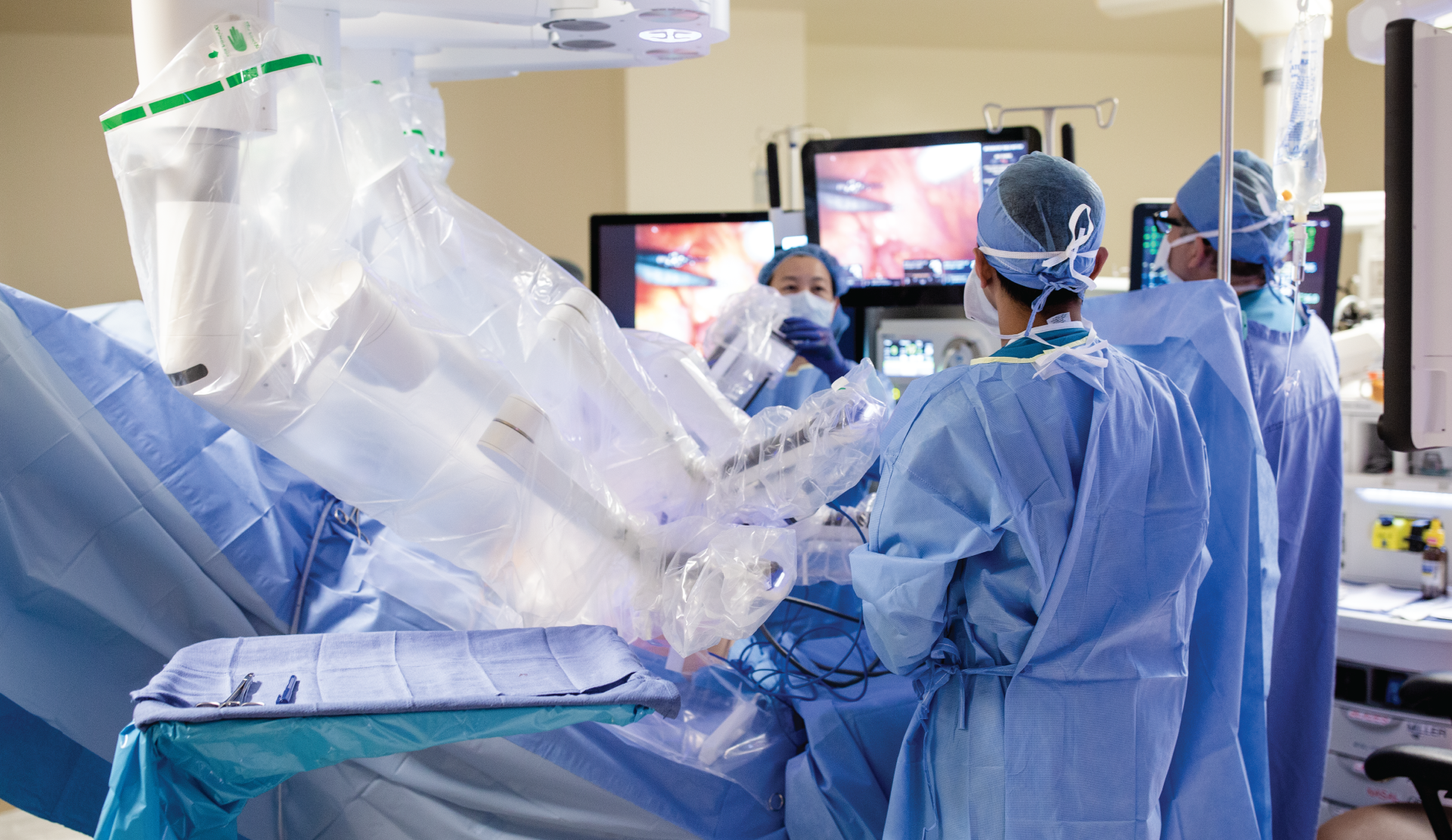
Robotic-assisted surgery launched at Community Hospital
Community Hospital of the Monterey Peninsula’s robotic-assisted surgery program pairs a team
of specially trained surgeons with the newest
da Vinci Xi surgical system.
Robotic-assisted surgery is minimally invasive, with small incisions that can result in faster recovery and shorter hospital stays, less blood loss, less pain, and smaller scars. At Community Hospital, the da Vinci system is currently being used for urology and gynecology surgeries.
“This advanced technology builds on our already excellent surgical program,” says Dr. Steven X. Cabrales, vice president
of medical affairs at Community Hospital. “Many surgeons today are being trained on the da Vinci system for certain procedures during their fellowships and residencies, so we are pleased to be able to put this new tool into experienced hands for our community.”
"Robotics is a fusion of both laparoscopic and open surgical techniques, where a surgeon can have precision and control combined with the smallest incisions possible."
— Harsha R. Mittakanti, MD, medical director
Community Hospital robotic-assisted surgery program
In robotic-assisted procedures, the surgeon is in control, guiding the small, precise movements of the system’s tiny instruments in the patient’s body. The da Vinci Xi provides a highly magnified view through 3D-HD vision, virtually extending the surgeon’s eyes and hands. Da Vinci systems have been used for more than 20 years, in more than
6 million surgeries.
The robotic-assisted surgery program at Community Hospital is led by Dr. Harsha R. Mittakanti, medical director. Mittakanti, a urologist, completed a fellowship at Swedish Medical Center in Seattle, where he trained under
Dr. James Porter, a pioneer in advanced robotic surgery techniques. Mittakanti has assisted in and performed more than 500 robotic surgeries.
The team also includes Dr. Thomas Cunningham, a gynecologist who has performed or assisted on nearly 200 robotic-assisted procedures, Dr. Craig Stauffer, a urologist trained in robotic surgery during his residency at Stanford University, and Dr. Elizabeth Clark, a gynecologist who taught residents how to operate robotically at the University of Texas Medical School in Houston, where she completed her residency.
The da Vinci system has been improved over time with feedback from surgeons. Key features of the Xi system used at Community Hospital include a new overhead instrument boom designed to allow easier surgical access, new endoscopic digital architecture that creates a simpler, more compact design with improved vision definition and clarity, thinner arms with newly designed joints that offer a greater range of motion, and longer instrument shafts designed to expand the surgeon’s operative reach.
“Robotics is a fusion of both laparoscopic and ‘open’ surgical techniques, where a surgeon can have precision and control combined with the smallest incisions possible,” Mittakanti says. “Robotic surgery provides me with a superior field of vision — an ultra high-definition, 3-D view of all the organs, blood vessels, and nerves in the abdomen and pelvis. The arms of the robot mimic my hand and wrist movements exactly, allowing me to operate as if my own hands were inside the body.”
At Community Hospital, the system is being used primarily to treat:
UROLOGIC ISSUES INCLUDING
- Prostate cancer
- Kidney cancer or disorders
- Ureteral cancer
- Bladder cancer
- Urinary blockages (from benign prostatic hyperplasia, or BPH)
- Urinary reconstruction
GYNECOLOGIC ISSUES INCLUDING
- Fibroids
- Endometriosis
- Abnormal or heavy bleeding
- Cancer
- Pelvic prolapse
“We provide robotic and non-robotic surgery options for patients so that we can meet the variety of needs of our community,” Cabrales says. “Having the expertise and the tools ensures that residents can get the care they need, close to home.”

